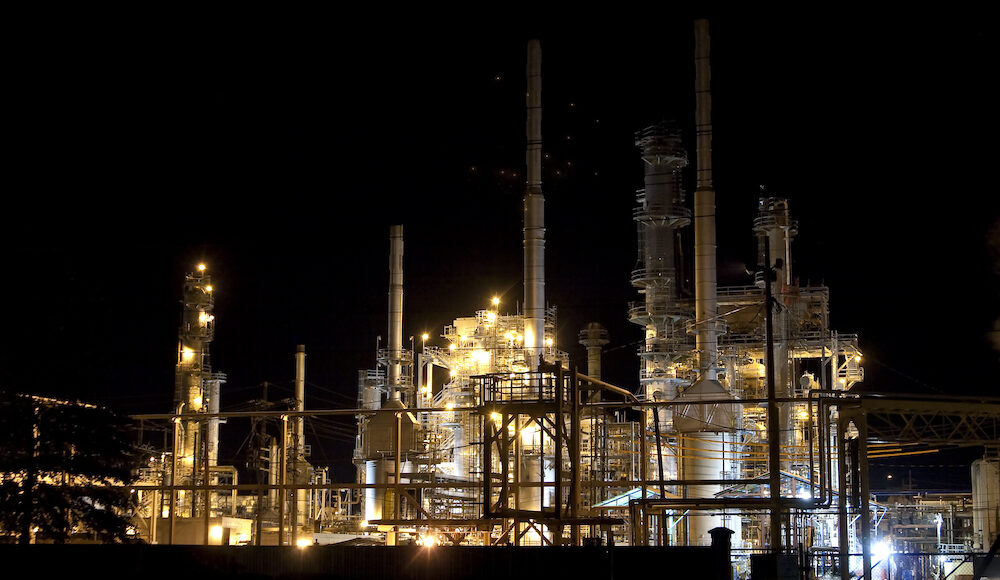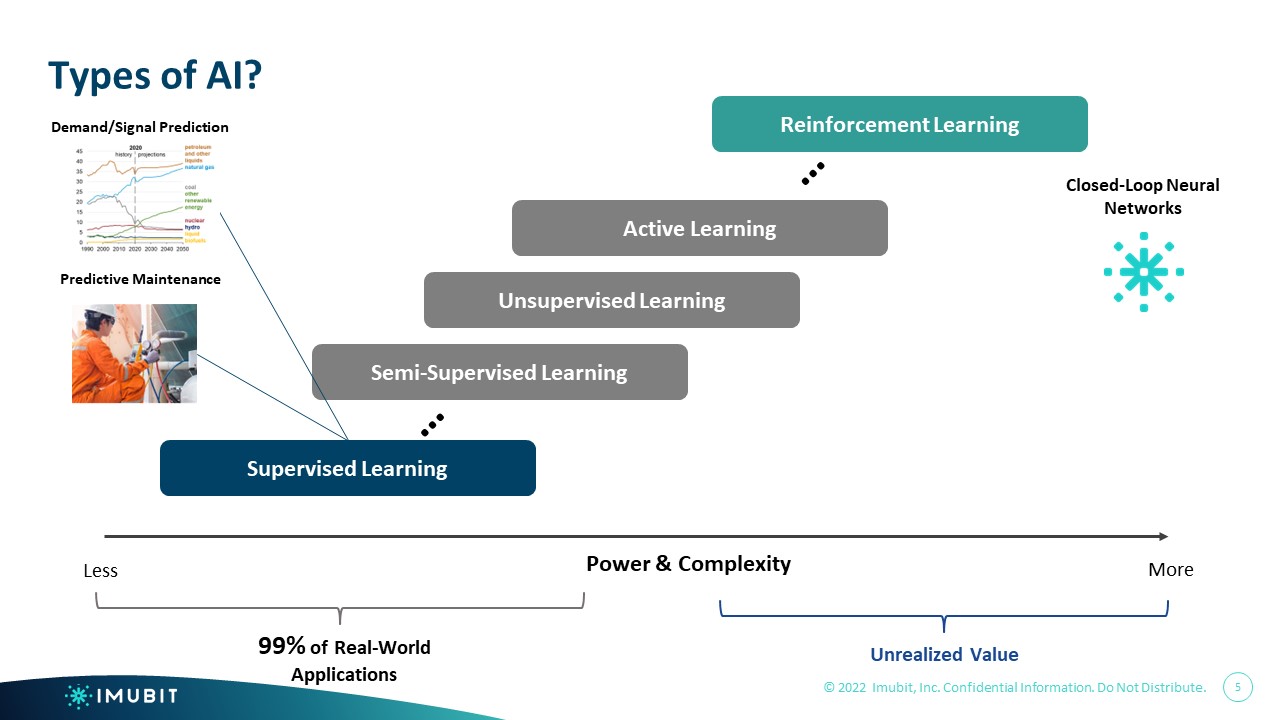
Discover
Leverage data from a variety
of plant data sources

Capture
Visualize real-time value generation, change
constraints and targets all on-premises

Sustain
Rationalize model decisions by running
through “what-if” simulations
EXPLAINER VIDEO
Closed Loop Neural Networks
As a Controls Engineer, you are well aware of the non-linear process relationships and varying dynamics associated with optimizing a refinery. While linear or purely 1st principle models have helped us automate the plant for decades, advances in AI offer additional capabilities and reach for process optimization. This new approach can model the plant’s true reality based on historical process data and master complex solution spaces, capturing further value in the most challenging refinery applications.
Learn more about Imubit’s Closed Loop Neural Network solution and dive deeper into the fundamentals of our Deep Reinforcement Learning approach.
CASE STUDY
Hydrocracker Yield Improvement
Learn how Imubit’s Deep Learning Process Control was applied on this complex refinery to directly manipulate key handles while respecting safe control limits and maximizing a defined economic objective.
Read the story >

Ready to implement DLPC at your plant?
WEBINAR REPLAY
Technical Deep-Dive
Discover how Imubit’s Deep Reinforcement Learning-powered platform enables Controls Engineers to develop Deep Learning Process Control (DLPC) models for refineries.
Watch this webinar replay as we dive deep into the fundementals of Imubit’s Closed Loop Neural Network solution. We explore how the DLPCs are trained, what is specified by the plant expert, and how to understand what your AI models have learned all before implementing models for direct control of the plant.
WATCH NOW >

Optimizing FCCUs
Understand Imubit’s Closed Loop Neural Network™ platform. We will cover some fundamental concepts of AI and spotlight the technology’s powerful capabilities with real case studies. You will see how this type of AI is actually delivering millions of dollars of value in continuous optimization at refineries and chemical plants today.
FAQs
How is DLPC technology different from APC?
DLPC is NOT a replacement for APC. DLPC focuses on using the key handles to drive to an economic objective while respecting key operational limits, while APC is able to manage a larger matrix size to account for all handles and constraints. DLPC is able to model the true non-linearity of a process system with the use of a neural network controller, while APC uses linear models to simplify process dynamics. DLPC can also control and optimize across a system of units while APC normally focuses on control of a single unit or unit ops.
How is DLPC technology different from RTO?
DLPC has several advantages over traditional RTO. First, DLPC is trained through reinforcement learning and develops human-like intuition. This intuition allows the DLPC to compensate for gaps in the process model and does not require an excessive amount of inputs around composition and other low-frequency inputs. DLPC also generates a smooth and continuous solution and is not prone to issues such as solution flipping, commonly seen with RTO. DLPC is able to drive to the global optimum with use of a neural network predictor working with a neural network controller. Lastly, Imubit’s Closed Loop Neural Network solution allows the entire plant to understand and engage with DLPC. RTO has been traditionally owned and understood by a small number of experts, which makes it very difficult to drive engagement.
Does DLPC require an existing APC?
While this is a preferred integration, DLPC does not require an existing APC in order to be deployed and can write directly to the DCS. If a traditional APC problem needs to be solved to effectively optimize the process, Imubit creates smaller DLPCs that manage the lower level problems integrating with a higher level DLPC. If there is an existing APC, DLPC will integrate with APC taking over key handles by writing external targets to APC. Depending on the situation, APC CVs will need to be shadowed into DLPC. These are details that are defined during scoping with the customer.
Does Imubit have experience working with different DCS systems?
Yes, the Imubit System Integration team has experience in most of the major DCS systems. Imubit has supported multiple integrations with Honeywell DCS (TDC and Experion C300) and Honeywell APCs, DeltaV, Foxboro, PLCs andhas AspenTech DMC+, DMC3 experience. Imubit has DCS and Process Control Best Practices available to aid clients in robust integration controls.
How does DLPC handle bad I/O
or when a signal
goes bad?
If a variable is classified as control critical, a bad signal will cause the DLPC model to disengage. If the variable is classified as observation, a bad signal will be logged as an error, but will not disrupt engagement. Variables that are trained in the model are control critical. Any other variables can be classified as observation (used for graphical purposes only).
How often does DLPC
write out a new setpoint/target?
DLPC will write out a new set point on the frequency of a DLPC step size. The DLPC step size is typically between 2 to 10 minutes. The DLPC step size is determined based on the amount of filtering required on signals to remove instrumentation noise as well as the frequency required to work with the lower level controls (needs to be slower than base layer).
How does DLPC handle windup?
DLPC will maintain the current setpoint when the delta between the setpoint and process variable exceeds a minimum threshold (specified by the user), but will allow the setpoint to move closer to the process variable. Windup in the DLPC Application can be activated or deactivated.
How does DLPC handle biasing?
Inferential biasing uses the CUSUM method that is built into the DLPC Application. The user can input the threshold standard deviation and the biasing coefficients. DLP biasing is inherent in the training algorithm and is based on a continuous rolling window of independent variables. On each new step, the DLP will initialize to the existing process variable value and then calculate the step.
How does DLPC handle MV outside of bounds?
DLPC will not violate MV bounds. DLPC is trained to not violate MV bounds as well as there is logic in the DLPC Application that prevents a setpoint to be written outside of the MV bounds. If the model is engaged with the MV outside of its bounds, DLPC will move the MV towards the bound at its rate bound. However, if the MV cannot reach its bound within an acceptable number of steps (user-defined), then DLPC will disengage.
Can individual variables be turned off in the DLPC model while engaged (closed loop)?
Variables and constraints in the model can be flexed on or off, only if the variable or constraint was trained with the capability. A variable that is flexed off means that it is no longer used for control, but the data is still used in next step predictions. If a variable without the flex capability needs to be flexed off, a retrain is required.
Unlock your plant’s Untapped Value.
It all starts with Imubit.

